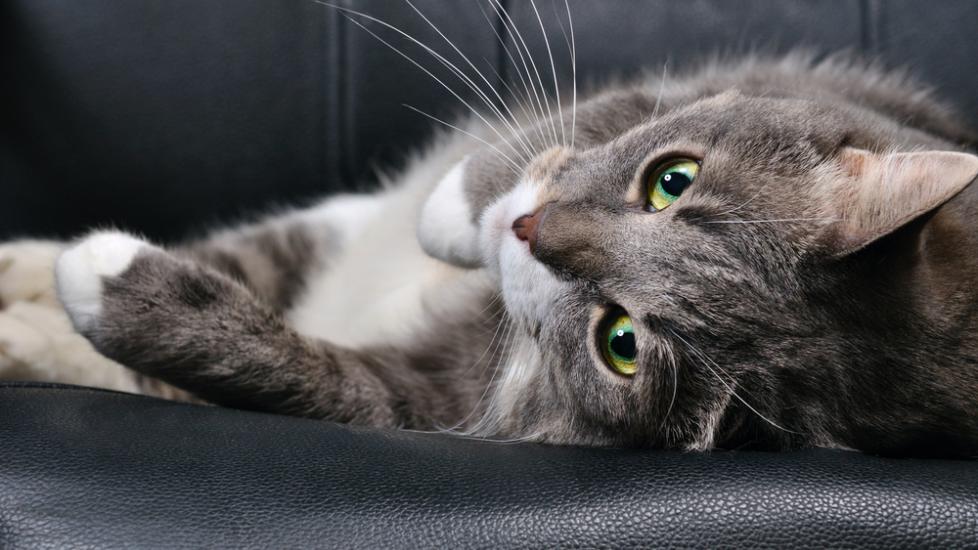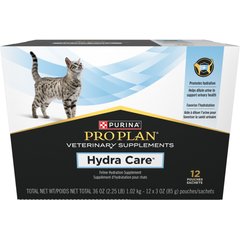Hyperparathyroidism in Cats
Excessive Levels of Parathyroid Hormone in the Blood in Cats
Primary hyperparathyroidism refers to a condition in which a tumor in the parathyroid gland produces excessive levels of parathyroid hormone, leading to increased blood calcium levels (hypercalcemia).
Secondary hyperparathyroidism can be caused by a deficiency of calcium and vitamin D, and is associated with malnutrition or long-term (chronic) kidney disease.
There is no known genetic cause for primary hyperparathyroidism, but its association with certain breeds suggests a possible hereditary basis in some cases. Secondary hyperparathyroidism can develop in association with hereditary kidney disease (known as hereditary nephropathy), but is not inherited per se. Siamese cats seem to show some predilection for this disease. In cats, the average age is 13 years, with a range of 8 to 15 years of age.
Vet Recommended Health Support
- Feliway Optimum Enhanced Calming 30 Day Diffuser for Cats$29.99Chewy Price
- Purina Pro Plan Veterinary Diets FortiFlora Powder Probiotic Digestive Supplement for Cats, 30 count$30.99Chewy Price
- Purina Pro Plan Veterinary Diets Hydra Care Liver Flavored Liquid Supplement for Cats, 3-oz pouch, case of 12$14.99Chewy Price
- Purina Pro Plan Adult Sensitive Skin & Stomach Lamb & Rice Formula Dry Cat Food, 7-lb bag$28.08Chewy Price
Symptoms and Types
- Most cats with primary hyperparathyroidism do not appear ill
- Signs are usually mild and are due solely to the effects of high levels of calcium in the blood
- Increased urination
- Increased thirst
- Lack of appetite
- Sluggishness
- Vomiting
- Weakness
- Presence of stones in the urinary tract
- Stupor and coma
- Veterinarian may be able to feel enlarged parathyroid glands in the neck
- Nutritional secondary hyperparathyroidism is caused by diets that have too little calcium and vitamin D or too much phosphorus – it is a type of malnutrition
- Nutritional secondary hyperparathyroidism sometimes is associated with bone fractures and general poor body condition
Causes
- Primary hyperparathyroidism – PTH-secreting tumor of the parathyroid gland; in most cases only one gland has a tumor; malignant tumors of the parathyroid glands are uncommon
- Secondary hyperparathyroidism is related to malnutrition – nutritional deficiency of calcium and vitamin D or nutritional excess of phosphorus
- Secondary hyperparathyroidism is also related to long-term (chronic) kidney disease. Calcium is lost through the kidneys and absorption of calcium is reduced through the intestinal tract due to deficiency of a hormone known as calcitriol (which regulates levels and absorption of calcium in the intestines), which is produced by the kidneys; may also be due to the retention of phosphorus in the body
- Primary hyperparathyroidism – unknown
- Secondary hyperparathyroidism – related to calcium/vitamin D malnutrition or to long-term (chronic) kidney disease
Your veterinarian will be looking for cancer first and foremost for the cause for this disease. However, several other possibilities will also be considered, such as renal failure and vitamin D intoxication, which have been known to be found in some rodenticides. Other possibilities are too much calcium in the blood in cats. A urinalysis will reveal calcium and phosphate levels.
Serum ionized calcium determination is often normal in patients with chronic renal failure and high in patients with primary hyperparathyroidism or hypercalcemia that is associated with a malignancy. If kidney stones are suspected, your veterinarian may use x-ray and ultrasound imaging of the parathyroid gland to discover whether there is tumor there. If nothing can be found using these diagnostic techniques, your veterinarian may need to use surgery to explore the area of the thyroid and parathyroid.
Treatment
Primary hyperparathyroidism generally requires inpatient care and surgery. Secondary hyperparathyroidism related to malnutrition or long-term (chronic) kidney disease in non-critical patients can be managed on an outpatient basis. Your veterinarian may recommend calcium supplements to stabilize the levels of calcium in the blood and intestines. Low phosphorus diets for secondary hyperparathyroidism related to long-term kidney disease may be recommended as well. Surgery is the treatment of choice for primary hyperparathyroidism and is often important in establishing the diagnosis. If a tumor is found, the best resolution is often surgical removal of the tumor. Medications will be prescribed according to the final diagnosis and treatment plan.
Prevention
No strategies exist for prevention of primary hyperparathyroidism; however, secondary hyperparathyroidism related to malnutrition can be prevented by proper nutrition.
Living and Management
Postoperative low levels of calcium in the blood (hypocalcemia) is relatively common after surgical removal of one or more parathyroid glands for treatment of primary hyperparathyroidism, especially in patients with presurgical calcium concentrations greater than 14 mg/d. Your veterinarian will want to check serum calcium concentrations once or twice daily for at least one week after surgery, and will schedule your cat for regular blood tests to check the status of the kidney.




